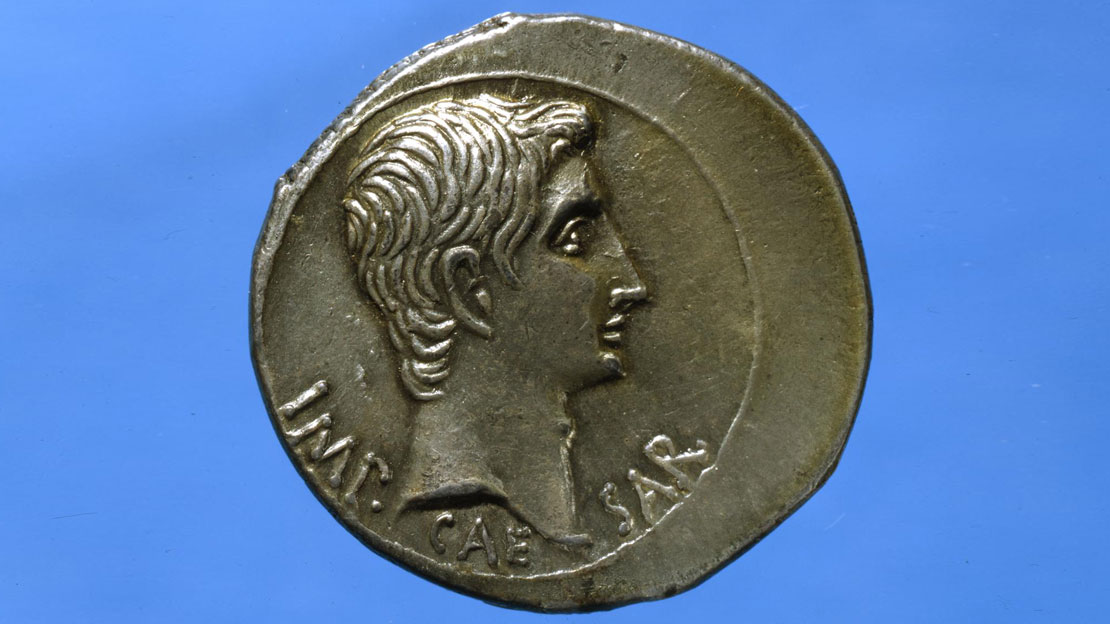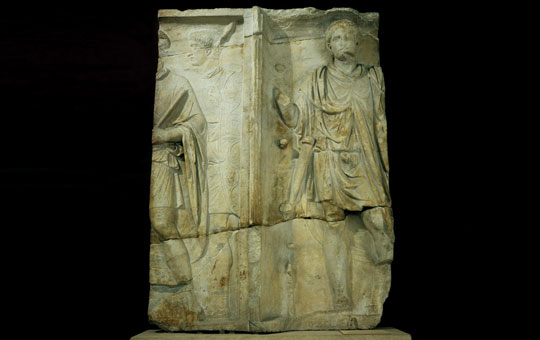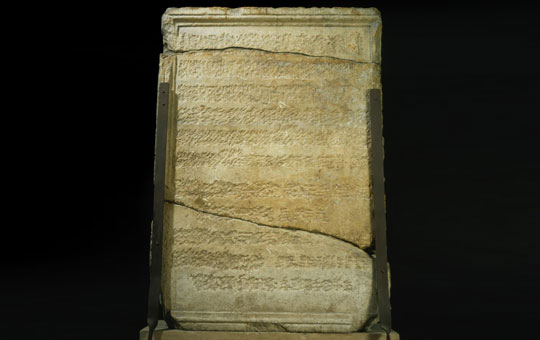This page includes information that may not reflect the current views and values of the Penn Museum.
The Roman Republic had a representative form of government that divided power between the Senate and two consuls presiding over an array of lesser magistrates. It lasted from its traditional beginning in 509 BC until 31 BC when it was reorganized by Octavian (later called Augustus) after many years of brutal civil war.

Augustus installed a form of government which kept the Senate and consuls, but placed power effectively in the hands of a supreme ruler, the emperor, who was to hold that power for life. He himself ruled for 45 years. Fifty-one emperors followed Augusuts, some ruling for more than two decades, other for only days. The Roman Empire itself lasted for over three and a half centuries. Imperial rule may be divided into five dynasties, separated by periods of disruption or anarchy.
This marble block was originally used for an honorific inscription that was later chiseled off, making it nearly unreadable today. The inscription lauded the emperor Domitian for his civic and military achievements, alluding to something he did (probably new road construction) for the town of Puteoli. In fact, Domitian was a paranoid and curel emperor who sought to take away too much power from the Roman Senate. He was assasinated in AD 96. His memory was condemned by the Senate and all public trace of his rule, including this inscription, was expunged in an aofficial act of damnatio memoriae.
Not long after the inscription on Side A was defaced, the back of the Puteoli block was carved into a relief panel and mounted on an arch to honor the celebrated Trajan. Depicted are three soldiers in parade dress who are members of the emperor Trajan's personal bodyguard, the Praetorian Guard. Trajan himself would have appeared above or below them, but only this portion of the arch survives (an adjacent fragment is in the Berlin Museum). The defaced inscription to the emperor Domitian and Trajan's Praetorian guard, back to back, remind us that an emperor's power depended directly upon the support of his army.

